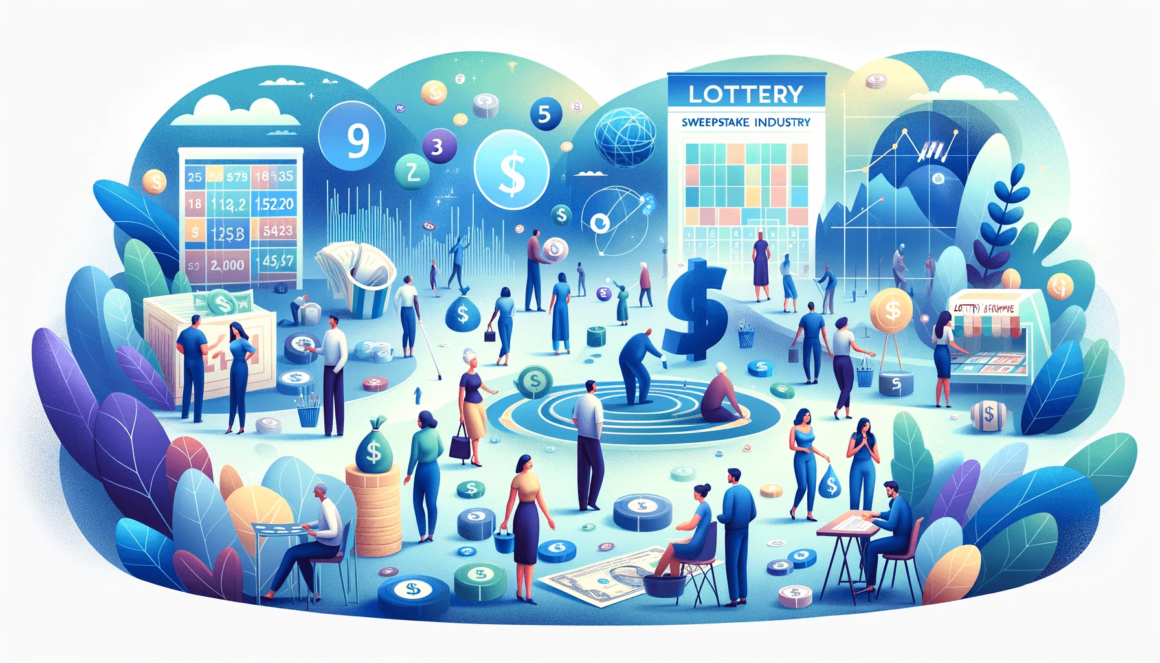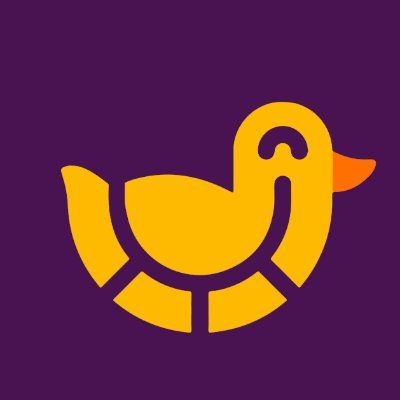Cracking the Code: Unveiling the World of Sweepstakes Industry Statistics in 2024
A sweepstake is a contest where winners can receive prizes originally associated with product-based lotteries. Approximately 55 million Americans participate in sweepstakes and contests annually.
As technology advances, online platforms and traditional marketing campaigns play a vital role in shaping the evolution of sweepstakes, captivating an expanding audience eager to seize their shot at fortune.
Let’s delve deeper and look at the statistics and facts about the sweepstakes industry.
Highlights of the Article
- Sweepstakes lotteries contributed a whopping $31.22 billion to state budgets.
- The global online lottery market reached an impressive $10.3 billion in 2022.
- About 95% of lottery ticket buyers choose to purchase additional items.
- The Philippine Charity Sweepstakes Office made 21 lotto millionaires.
- Illinois residents spend an average of $288.19 per year on the lottery.
- Women are 53% more likely to participate in online sweepstakes than men.
- Roughly 80% of new businesses started by sweepstakes winners fail.
- A staggering 70% of sweepstakes lottery winners face financial bankruptcy within a few years.
How Big is the Sweepstake Industry?

Amid COVID-19, online sweepstakes efforts boosted brand visibility. The Sweepstakes Software market, valued at $107.03 Million in 2022, is projected to reach $186.96M by 2028, growing steadily at 9.74%.
Businesses use sweepstakes software to engage customers through reward-based promotions to engage existing and potential customers effectively.
This article will examine the size of the sweepstakes industry, including sweepstake ticket sales and revenue statistics and the demographics of sweepstake winners.
Sweepstake Industry Size
The lottery is the biggest platform of a sweepstakes competition. The lottery market was worth $300.6 billion in 2021 and is expected to land at $430.4 billion by 2031.
Lotteries are popular games of chance where winners are randomly selected based on specific numbers.
Take a closer look at the statistics behind the size of the lottery sweepstake industry.
1. In 2022, the size of the global online lottery market reached US$ 10.3 billion.
(LinkedIn)
Online lotteries, involving ticket purchases and random prize selection, reached a market value of $10.3 billion in 2022.
According to industry estimates, the market is projected to reach US$ 15.1 billion by 2028, growing at a CAGR of 6.58% between 2022 and 2028.
The growing popularity of online lotteries among consumers is due to enhanced mobile accessibility, digital payment options, and improved betting processes, security, and reliability.
2. State budgets received a significant contribution of $31.22 billion from sweepstakes lotteries.
(Statista)
Lottery revenues are vital in supporting government budgets and funding programs, contributing around $31.22 billion to state and local governments in the US in 2021.
Government lotteries support public programs and are seen as a source of painless revenue generated by voluntary player spending.
3. The Philippine Charity Sweepstakes Office managed to create a total of 21 lotto millionaires in 2020.
(PCSO)
In 2020, the PCSO created 21 lotto millionaires and 7.663 million non-jackpot winners. The PCSO dedicated P1.502 billion and P3.642 billion correspondingly to award these winners.
The PCSO provides engaging sweepstakes and lottery games that adapt to changing times, attract more clients, and offer various products.
Sweepstake Ticket Sales and Revenue Statistics
The Lottery Commission’s Executive Director announced the results for the agency’s first half of the fiscal year. Sales reached $2.723 billion, a 2% increase, generating an estimated profit of $531.7 million.
Despite a decline in Keno sales, scratch tickets saw a significant growth of approximately $105.3 million in sales. This was an exceptional performance, considering the challenges of the pandemic.
Continue reading to know more about the sweepstakes ticket sales and revenue statistics.
4. Approximately 95% of lottery ticket buyers opt to purchase at least one additional item.
(Statista)
Approximately 50% of lottery tickets in the United States are sold at convenience stores, and nearly 95% of lottery ticket buyers opt to purchase at least one additional item.
In 2021, state lottery sales in the US amounted to around $105.26 billion, marking a $15.67 billion increase from the previous year. The sales of state lotteries in the US have experienced fluctuations over the past decade.
Convenience stores play a crucial role as main lottery ticket distributors in the US, accounting for approximately half of all ticket sales. This highlights their significance in reaching a broad customer base.
5. Total revenues for US lotteries increased by 2.5% from the previous year, reaching $107.9 billion.
(Public gaming)
Despite the pandemic challenges, US lotteries saw significant revenue growth of 2.5% in 2021, reaching $107.9 billion.
Notably, the total funds allocated to lotteries’ beneficiaries reached a new industry record, surpassing $28.6 billion.
This significant revenue supports crucial programs such as education, the environment, economic development, cities and towns, senior citizens, veterans, and other essential initiatives.
6. In Illinois, individuals spend an average of $288.19 per year on the lottery.
(Go banking)
The Illinois lottery plays a significant role, with residents showing strong interest and contributing substantial revenue. Over $20 billion has been generated, benefiting education, capital projects, and special causes.
The amount spent by citizens in 2020 underscores the continued popularity and economic importance of the lottery in Illinois.
Sweepstake Winner Demographics
On average, US sweepstakes lottery winners spend around $940,000 in their first year of winning. 70% donate at least $100,000 to charity or assist family members by providing funds or buying homes.
In 2019, the US and the UK witnessed a surge in lottery-made millionaires, reaching 342 and 203, respectively. Despite this, 80% of businesses started by lottery winners fail within three years.
Continue reading to learn more about the demographics of sweepstakes winners.
7. 53% of women are more likely to participate in online sweepstakes than men.
(Snipp)
Women in the US show greater enthusiasm for online sweepstakes and contests compared to men, indicating their higher engagement and interest.
Diana “Di” Coke, an exemplary figure on sweepstakes, amassed $376k over 20 years. With dedication, a strategic approach, and automated tools, she optimizes her winning opportunities and enjoys a remarkable collection of rewards.
8. The percentage of sweepstakes lottery winners who experience financial bankruptcy within a few years is 70%.
(NEFE)
According to the NEFE, approximately 70% of sweepstakes lottery winners ultimately experience financial distress and eventually declare bankruptcy.
Poor financial management, excessive spending, and high-risk investments lead to the rapid loss of lottery winnings, emphasizing the significance of wise financial habits.
9. Within the first three years of establishment, approximately 80% of new businesses initiated by lottery winners experience failure.
(Gitnux)
Starting a business after winning a sweepstakes lottery is highly risky, with a staggering 80% failure rate within three years. This highlights the importance of careful planning and preparation.
The data serves as a reminder that even with ample financial resources, many winners struggle to achieve long-term success, emphasizing the unpredictable nature of entrepreneurial endeavors.
Final Words
The sweepstakes industry presents chances to win big prizes, primarily through lotteries. Sweepstakes winners tend to spend generously, support charities, and help family members.
However, starting a business after winning usually fails. Financial distress and bankruptcy are common. Proper financial management is crucial in navigating sudden wealth pitfalls.
FAQ
What is the meaning of a sweepstakes competition?
A sweepstake is a contest that offers individuals the opportunity to win prizes. The number of winners varies depending on the specific conditions of the sweepstake.
What are sweepstakes?
In sweepstakes, winners are chosen purely by chance. Once all participants have entered, a winner is selected randomly, without any predetermined bias.
Why is it called sweepstakes?
Since the late 14th century, “sweeps” refers to someone who collects all the stakes in a game. In a figurative sense, it described someone who took or seized everything for themselves.
What is an example of sweepstakes?
Sweepstakes are random prize competitions where winners are chosen from eligible participants, receiving rewards of varying value.
What is the difference between giveaways and sweepstakes?
Giveaways involve providing free items as part of a promotional event, while sweepstakes are a type of contest where a prize is awarded to a random winner.
 BC.Game
BC.Game  7Bit
7Bit  Ducky Luck
Ducky Luck  Red Dog
Red Dog